The historical record shows quite clearly that states, or those acting on behalf of the state, have been responsible for the vast majority of large-scale terrorist acts against civilians.
When political corruption is taken to extremes (as has often been the case) some form of popular revolt is inevitable. When such insurrections have occurred, the established order have responded by attacking the civilians that pose a threat to their ascendancy. History is littered with examples of this. Since terrorism is most often defined today as an attack on a civilian population, it is reasonable then to state that it is the state that has historically had both the motive and opportunity to carry out most major terrorist acts.
Corrupt state actors, however, have been careful to recognise that subversive movements very often represent the voice of the 'silent majority' of ordinary people and, as a result, can quickly garner wide-spread popular support. If an entire nation were to rise up against the elite, the game would be over. At the same time, the state cannot simply destroy such movements by 'decapitating' the leadership, because that would risk making popular heroes of the slain and perpetuate among the population the anti-establishment ideals for which the insurgents stood. This is particularly true in nations that are nominally democracies and whose leaders wish to maintain the 'democratic' facade both domestically and internationally.
The aim of state-sponsored counter-rebellion or 'counter-insurgency' is to subvert the rebels and the ideals for which they stand (most often social justice and equality, land rights etc.) and successfully portray the rebels and their ideology to the wider population (and world) as self-interested, fundamentally lawless, and immoral miscreants who must be dealt with severely. In pursuit of this aim, otherwise benign ideological divisions that exist within most populations can be stirred up and exacerbated in an effort to split the grass-roots support for any rebellion and align a significant percentage of the population with the state and against the rebels. If successful in this effort, the terroristic state policies that provoked the rebels to form in the first place can be increased and spun as lawful defence against the 'terrorism' of the rebels. Winning the public information battle - defining the nature of and reasons for the conflict - is therefore a key element in deciding the outcome. With the resources of the state on its side however, the ruling class or state usually have a distinct advantage in this respect.
British Imperial Adventures
The situation is slightly different in the case of empire building. In the pursuit of empire, an invading force finds it difficult to successfully convince the host population that they are anything other than an invading force, and provoking divisions requires more drastic methods than mere propaganda. In the cases where an invading force manages to portray its motives as benevolent, like spreading 'freedom' (or more recently 'freedom and democracy') the charade is quickly exposed when the effects of 'pacification' are implemented. Eventually, the remit of a colonizing army cannot but provoke the ire of the local population and turn them fully against the invaders. This results in the formation of a local resistance movement made up of and/or supported by the local civilian population. To deal with this type of insurgency, the invader must not only attempt to convince the local population that the insurgents are unworthy of popular support, but also convince the public 'back home' of the charitable nature of expropriating someone else's country. The first is difficult due to the fact that the population to be colonized is more likely to unite against an obviously foreign invader and less likely to succumb to efforts to divide them along existing ideological, political or social lines. Having said that, the advantage in the case of colonization is that the local social elite (if it exists) can often be bought off with promises of the retention or upgrading of their positions post-colonization. As regards the public back home; media co-operation, including the broadcast of disinformation and outright lies, not to mention patriotism and the stimulation of dormant (or not-so-dormant) racist inclinations, can usually be relied on to ensure that the public will rationalize away even the worst military excesses on foreign soil.
The official version of the effect and legacy of the British Empire as recorded in most history books paints a picture of philanthropy writ large across the globe. The reality of the methods used by the British to establish and maintain their 'overseas holdings' however are a lesson in true terrorism. Given that the origins of the British Empire stretch back at least 500 years, hard data about these methods is scarce for most of that time. Some details however are available. We can, for example, dispel the popular myth of the 1845 'Irish potato famine' when somewhere between 1 and 2 million Irish civilians died and a further 2 million were forced to emigrate to survive. History records that this mass extermination was caused by a multi-year blight on the potato crop, rendering the harvest inedible. As a result, we are told, millions died of starvation. Little space however is given to an explanation of the context or the historical background in which this mass 'die-off' took place.
Ireland's 'Potato Famine'
By 1845 Britain had been occupying Ireland and attempting to subjugate her people, with only limited success, for about 600 years. The Irish people had the annoying habit of repeatedly attempting to throw off the yoke of serfdom to a foreign master. British response to these successive waves of 'home-grown insurgency' were typical of a ruling elite's response to popular insolence - through wholesale murder, imprisonment, torture, deportation to other colonies as slaves and the passing of extremely prejudicial laws against the native Irish, they attempted to stamp it out. By the 1600s however, with the periodic uprisings continuing, these measures were still not producing the desired effect.
A new plan was thus developed to subjugate the Irish by law, the most significant of which were the 'Tithing' and later 'Penal laws' which prevented any Irish person from: owning or leasing land, voting, holding political office, living in a town or within five miles of a town or obtaining an education or entering a profession.
At the same time, English landlords (mostly absentees) had been given vast tracts of Irish land which they used to graze cattle and grow profitable crops (not potatoes) which were exported for the English market and to feed British troops on imperial adventures in more distant lands, such as those fighting the 'First Anglo-Afghan war'. The native Irish were therefore forced to grow the only crop available to them, potatoes, on any small patch of unfavourable soil they could find. As a result, between 1728 and the devastating hunger of 1845-50, there were 28 artificial famines in Ireland that cost the lives of half a million Irish. Throughout this period, Ireland had produced enough food to feed her native population twice over, but almost all of it was being exported, under force of arms, by the English. In her book, 'The Great Hunger: Ireland: 1845-1849' British historian and biographer Cecil Woodham-Smith quotes an English government official at the time:
"The barges leave Clonmel once a week for this place, with the export supplies under convoy which, last Tuesday, consisted of 2 guns, 50 cavalry and 80 infantry escorting them on the banks of the Suir as far as Carrick." On one day at the height of the 'famine' there steamed from Cork harbor alone: 147 bales of bacon, 120 casks and 135 barrels of pork, 5 casks of hams, 149 casks of miscellaneous provisions, 1,996 sacks and 950 barrels of oats; 300 bags of flour; 300 head of cattle; 239 sheep; 9,398 firkins of butter and 542 boxes of eggs.Nicolas Cummins, an English 'Justice of the Peace' (a type of magistrate), at the time gave this account of what he saw:
"I entered some of the hovels...and the scenes, which presented themselves, were such as no tongue or pen can convey the slightest idea of. In the first, six famished and ghastly skeletons, to all appearance dead, were huddled in a corner on some filthy straw, their sole covering what seemed a ragged horsecloth, their wretched legs hanging about, naked above the knees. I approached with horror, and found by a low moaning that they were alive - they were in fever, four children, a woman and what had once been a man... in a few minutes I was surrounded by at least 200 of such phantoms, such frightful spectres as not words can describe."In the 1856 Sessional Papers of the English House of Commons, Vol, 29 part 5, page 243 we read:
"The actual starving people lived upon the carcasses of diseased cattle, upon dogs, and dead horses, but principally on the herbs of the field, nettle tops, wild mustard and watercress's, and even in some place dead bodies were found with grass in their mouths."In March 1846, as leader of the 'liberal' Whig opposition party (that would be Tony Blair's ideological forebear) - and a few months before he would be elected British Prime Minister - Lord John Russell had this to say on the matter:
"We have made it [Ireland] the most degraded and most miserable country in the world... all the world is crying shame upon us; but we are equally callous to our ignominy and to the results of our misgovernments."Irish journalist and solicitor John Mitchel appears to have perceived the British aim in provoking a 'famine' when he wrote in his book The History of Ireland: "A landless, hungry pauper cannot afford to think of the honour of his country, and cares nothing about the national flag." As to the much-debated question of whether the effective genocide committed against a quarter of the Irish population was the indirect result of a policy of British greed or a conscious political/military effort to deal once and for all with the 'Irish question', we need only look to the words that appear in a 1601 letter from Lord Deputy of Ireland Sir Arthur Chichester to Lord Burghley, Queen Elizabeth's chief adviser:
"I have often said, and written, it is Famine which must consume them (the Irish); our swords and other endeavours work not that speedy effect which is expected, for their overthrow."Any potential dissent among the English public over the inhuman treatment of the Irish had long since been contained by way of racist government propaganda campaigns. The popular English humorous magazine Punch published the following portrait of the Irish in 1862:
"A creature manifestly between the gorilla and the negro is to be met with in some of he lowest districts in London and Liverpool by adventurous explorers. It comes form Ireland, whence it has contrived to migrate; it belongs in fact to a tribe of Irish savages: the lowest species of Irish Yahoo. When conversing with its kind it talks a sort of gibberish. It is, moreover a climbing animal, and may sometimes be seen ascending a ladder laden with a hod of bricks. The Irish Yahoo generally confines itself within the limits of its own colony, except when it goes out of them to get its living. Sometimes however, it sallies forth instates of excitement, and attacked civilized human beings that have provoked its fury."India and the British Raj
Around the same time as the Irish were being subjected to a British terror campaign, a similar story was unfolding in 'British' India.
From its creation in 1757 until its final dissolution in 1858, the British 'East India company' (a group of London merchants from the ruling class and acting on behalf of the Queen) plundered the resources (including the population) of the Indian continent in the name of Queen and country (and personal profit). Trading mainly in cotton, silk, indigo dye, saltpetre and tea, and having introduced illegal opium into China, the Company generated massive income and came to rule large swathes of India, exercising military power and assuming administrative functions on behalf of the British crown.
By May 1857, the brutality with which Indian recruits (called 'Sepoys) in the East India Company's army were being treated by their British masters had pushed the natives to breaking point. Rebellions broke out across the country under the leadership of Indian leaders and were suppressed with enthusiastic brutality by regular British forces. After the siege of Delhi for example, a letter published in the Bombay Telegraph, and reproduced in the British press, testified to the scale and nature of massacres by the British:
".... All the city's people found within the walls of the city of Delhi when our troops entered were bayoneted on the spot, and the number was considerable, as you may suppose, when I tell you that in some houses forty and fifty people were hiding. These were not mutineers but residents of the city, who trusted to our well-known mild rule for pardon. I am glad to say they were disappointed."Another brief letter from General Montgomery to Captain Hodson, exposes how the British military high command approved of the cold blooded massacre of Delhites:
"All honour to you for catching the king and slaying his sons. I hope you will bag many more!"As both a Cavalry leader and intelligence officer, Hodson was instrumental in forcing the capitulation of Delhi and personally captured the last Mughal Emperor of India, Bahadur Shah Zafar, along with his sons who were camped just outside Delhi at the tomb of a former Mughal emperor. Having demanded and obtained the surrender of Zafar, his three sons were mounted on a bullock-cart by Hodson and driven towards the city. As they approached the city gate, Hodson ordered the three princes to get off the cart and to strip naked. He then shot them dead before stripping them of their signet rings, turquoise arm-bands and bejewelled swords. Their bodies were thrown in front of a police-station, and left there to be seen by all.
Edward Vibart, a 19-year-old officer, recorded his experience of the retribution for the rebellion meted out to the inhabitants of the city:
"It was literally murder... I have seen many bloody and awful sights lately but such a one as I witnessed yesterday I pray I never see again. The women were all spared but their screams on seeing their husbands and sons butchered, were most painful... Heaven knows I feel no pity, but when some old grey bearded man is brought and shot before your very eyes, hard must be that man's heart I think who can look on with indifference..."Apart from the wholesale slaughter of Indian men, women and children, some rebels were 'blown from canon', a process where people were tied to the muzzle of a canon and blown to pieces.
The scale and savagery of the punishment by the British were considered as largely appropriate and justified by British people back home, who had been shocked by a barrage of press reports about atrocities carried out against Europeans and Christians by Indians. The problem however was that most of the press reports about Indian atrocities were false and had been deliberately spread by the British government and military command in order to justify the repression of the rebellious Indians.
British newspapers printed various 'eyewitness' accounts of the rape of English women and girls that were later found to be, in general, false. One such account published by The Times, regarding an incident where 48 English girls as young as 10 had been raped by Indian rebels in Delhi, was criticised as false propaganda by Karl Marx who pointed out that the story was written by a clergyman in Bangalore, far from the events of the rebellion. In addition, the British public had for many years been subjected to incessant racist propaganda that played a major part in the effective spread and maintenance of the British Empire. The Indian rebellion was, for the British public, just one more example of the ingratitude of the 'barbarous wretches' that the British were benevolently attempting to civilize.
As an example of the effectiveness of the British elite's efforts to inculcate their own deviant morality into the minds of the British population, it is instructive to consider the words of famous English author Charles Dickens, who said at the time:
"I wish I were Commander in Chief over there [India]! I would address that Oriental character which must be powerfully spoken to, in something like the following placard, which should be vigorously translated into all native dialects, 'I, The Inimitable, holding this office of mine, and firmly believing that I hold it by the permission of Heaven and not by the appointment of Satan, have the honor to inform you Hindoo gentry that it is my intention, with all possible avoidance of unnecessary cruelty and with all merciful swiftness of execution, to exterminate the Race from the face of the earth, which disfigured the earth with the late abominable atrocities.'"As a result of the Indian rebellion of 1858, the term 'sepoy' or 'sepoyism', formerly the name given to Indian recruits to the British army, became a derogatory term among the British and was used often to refer to nationalists and nationalist movements around the empire, especially in Ireland. The total number of Indians killed by the British during the rebellion is hard to know for sure, but low estimates suggest at least 'many hundreds of thousands' died while high estimates go into the millions, with many millions more displaced. No more than 2,000 British troops lost their lives.
With the rebellion crushed, the British government decided that a change of guard, if only in name, might be a good way to stave off any further national uprisings in India. The East India Company was therefore nationalized under the 'Government of India Act 1858' and the British Crown assumed direct administration of the country in the form of the 'British Raj'. Freedom and a land of their own was still a long way off for Indians however, and within a few years, the shadow of death would once again be cast across the subcontinent.
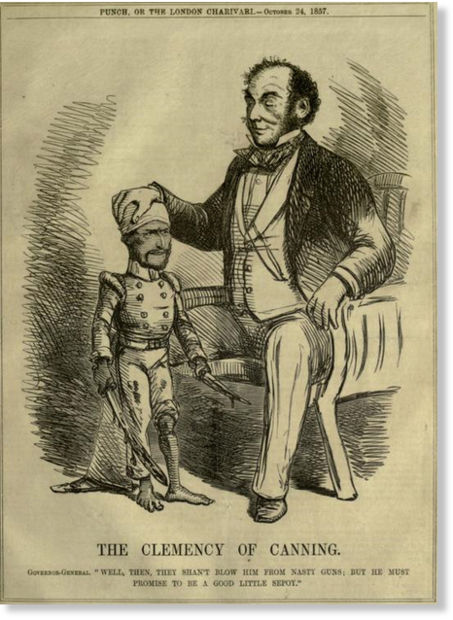
As was the case with droughts before and after, in 1876 there was in fact a net surplus of rice and wheat in the country, but the Viceroy, Lord Lytton, insisted that nothing should prevent its export to England. Indeed, all through the autumn of 1876, as the crops withered and people starved, Lytton was absorbed in preparations for the festivities that would surround the upcoming proclamation of Queen Victoria as 'Empress of India'. The celebration included a week-long feast for 68,000 officials and was at the time the most colossal and expensive meal in world history. An English journalist later estimated that 100,000 of the new Queen-Empress's subjects starved to death in Madras and Mysore in the course of her crowning ceremony.
In 1877 and 1878, at the height of the famine, British grain merchants exported a record 320,000 tonnes of wheat. As the peasants began to starve, officials were ordered to "discourage relief works in every possible way." The Anti-Charitable Contributions Act of 1877 prohibited, "at the pain of imprisonment, private relief donations that potentially interfered with the market fixing of grain prices." The only relief permitted in most districts was hard labour, from which anyone in an advanced state of starvation was turned away. In the labour camps, the workers were given less food than inmates of Nazi concentration camps. In 1877, monthly mortality in the camps equated to an annual death rate of 94 per cent.
As millions died, the imperial government launched "a militarised campaign to collect the tax arrears accumulated during the drought." The money, which ruined those who might otherwise have survived, was used by the British elite to fund their war in Afghanistan. Somewhere in the region of 7 million Indians starved to death as a result of the British manufactured 'famine' of 1876. Another false famine was provoked by the British in 1900 causing the deaths of 1 million, and again at the height of the Second World War, 'famine' struck the Bengal region killing 3 million while the British stockpiled and exported Indian food. In response to an urgent request by the Secretary of State for India Leo Amery and Field Marshall Wavell to release food stocks for India, Winston Churchill responded with a telegram asking, "if food is so scarce, why hasn't Gandhi died yet?"
General Rawlinson, the military commander in chief in India in 1920 commented:
"You may say what you like about not holding India by the sword, but you have held it by the sword for 100 years and when you give up the sword you will be turned out. You must keep the sword ready to hand and in case of trouble or rebellion use it relentlessly. Montagu calls it terrorism, so it is and in dealing with natives of all classes you have to use terrorism whether you like it or not."This is but a small window on the terrorism employed by the British elite in their centuries-long efforts to deal with popular insurgency in Ireland and India. There are many other examples from the 18th and 19th centuries from many other areas of the British Empire that could be drawn on to underline the point, but as noted, hard data is scarce, and it is to the 20th century and the 'Troubles' of Northern Ireland that we must look for detailed evidence of state terrorism against a civilian population.
Northern Ireland's 'Troubles'
British rule in Ireland goes back some 800 years. Throughout those years, successive waves of English and Scottish planters had been settled on Irish land with many concentrated in the Northern province of Ulster. The 'natural' discrimination the Irish experienced at the hands of the English simply for being 'not English' was bad enough, but in the aftermath of the Reformation and the Church of England's break with Rome, the Irish people's Catholic faith was to significantly worsen their plight.
In the late 1700s, a group of particularly zealous protestant ministers had established themselves in the Northern province of Ulster and set about inflaming local anti-Catholic sentiment with claims that the English government was planning on selling out its loyal English subjects in Ireland to 'Papacy'. Irish Catholic farms were attacked and burned and thousands were murdered by Protestant militia groups like the 'peep-o-day boys', so named because they would attack in the early hours. These groups were later incorporated into the sectarian, quasi-Masonic protestant 'Orange Order' that would play such a destructive role in Northern Ireland in the latter part of the 20th century.
After a heroic national uprising in 1916 and a protracted guerilla war against the English led by Michael Collins, partial independence was granted to Ireland in the 1920 'Government of Ireland Act'. Under strong lobbying and threats from Protestant zealots in the North of the country (who called themselves 'loyalists') the terms of the agreement stipulated that 6 counties of the province of Ulster (out of a total of 9 in that province and 32 in total in Ireland) would remain part of the United Kingdom. A border was duly gerrymandered in order to ensure that the loyal protestant subjects would be in the majority and, in this way, the 'statelet' of Northern Ireland was created. The Catholics who lived within the confines of the new 'statelet' and aspired to a unification of Ireland were called 'Republicans'.
A parliament (Stormont) was established in the newly formed Northern Ireland with a House of Commons and a Senate as well as a police force (The Royal Ulster Constabulary - RUC) made up almost entirely of Protestants. For the next 50 years, with the full support of the British elite, protestant citizens of Northern Ireland enjoyed rights that were systematically denied to the Catholic population. The influence of the sectarian quasi-Masonic 'Orange Order' in the governance of Northern Ireland was far-reaching. All of the six prime ministers of Northern Ireland were members of the Order, as were all but three cabinet ministers until 1969. Three of the ministers later left the Order, one because his daughter married a Catholic, one to become Minister of Community Relations in 1970, with the third expelled for attending a Catholic religious ceremony. Of the 95 Stormont MPs who did not become cabinet ministers, 87 were Orangemen. Every unionist senator, with one exception, between 1921 and 1969 was an Orangeman. One of these senators, James Gyle, was suspended from the Order for seven years for visiting nationalist MP Joe Devlin on his deathbed.
Inspired by the African-American 'Civil Rights Movement' in the US, by 1968 Irish Catholics in Northern Ireland had begun to publicly demand equal rights, including access to good jobs and public housing, abolition of employment discrimination and improvements in education and community facilities in Catholic areas. The 'Civil Rights Association' organised a march in the city of Derry on October 5th of that year. The march was banned by the Minister for Home Affairs but it proceeded anyway. In full view of television cameras, the protestant police force, the RUC, attacked the marchers and clubbed men women and children to the ground. When the student group 'The People's Democracy' began a three day march for civil rights on January 1st 1969 from Belfast to Derry, marchers were continually harassed by loyalists along the route. When the marchers neared Derry on January 4th, they were ambushed by loyalists and members of the police force carrying clubs studded with nails, iron bars, bottles and chains.
When the battered remains of the march reached Derry, fighting broke out between the RUC and Catholic youths. The following night, January 5th, an RUC force invaded the residential Bogside area of Derry breaking windows in homes and beating anyone unfortunate enough to be outside. The Bogside residents resorted to erecting barricades, and on the gable end of a house in St Columb's street, the famous 'you are now entering free Derry' mural was painted. The Catholic community of Northern Ireland quickly realised that they were on their own and would have to protect themselves. In April that year, during another RUC incursion, Bogside resident Samuel Devenny was badly beaten with batons by RUC members when they broke into his home. His teenage daughters were also beaten in the attack. Deveny later died from his injuries.
The civil rights movement decided to reduce the scale of its activities in an effort to calm the situation, but the decision by incoming Prime Minister James Chichester-Clark to allow the yearly summer Orange Order parades (deliberately routed through Catholic areas to assert protestant supremacy) to go ahead proved too much for the Catholic community to bear.
Serious rioting broke out in Belfast, Derry and elsewhere when the RUC killed two Catholics involved in protesting at an Orange Order march. When fighting broke out between the sectarian protestant group 'the Apprentice Boys' (who had staged a parade close to the Bogside area) and Catholic youths, the RUC responded with a full scale invasion of the Bogside. The battle lasted 48 hours during which the RUC sprayed the entire area of 50 streets with CS gas causing serious respiratory problems for residents. Residents responded by throwing petrol bombs and stones. Realising they had lost control of the situation, the Loyalist government of Northern Ireland appealed to the British government and for the first time in almost 50 years, British soldiers were deployed on the streets of Ireland.
During this time the IRA was criticised for its failure to protect the Irish Catholic population of Northern Ireland. The reality however is that the organisation was not in a position to do so. In 1960, after a low level campaign against the RUC, the IRA leadership had decided to abandon armed struggle in favour of political action. Now, with the increasing severity of attacks on Catholics, several senior members took the decision to reassert military action to protect their community and bring down the sectarian Northern Irish government.
The Catholic community initially welcomed the appearance of British troops on their streets as a buffer against loyalist and RUC violence. Loyalist and RUC attacks continued however, and as the IRA stepped up its campaign of attacks on the RUC, a new Conservative government under Edward Heath in June 1970 gave orders that any further rioting by Catholics should be put down with 'maximum force' by British troops. In July, when troops raided a house in the Falls Road in Belfast, a riot broke out and was responded to with the invasion of the area by 3000 British soldiers, armored vehicles and helicopters and the imposition of a curfew. From the 3rd to the 5th July, an area covering 50 streets was sealed off and troops looted and wrecked many houses. Four locals were shot dead and one was killed when he was crushed by an armoured vehicle. To add insult to grievous injury, two jubilant Protestant ministers were taken on a tour of the wrecked area by the army. The British elite had made clear to the Irish population the precise role that the British army would play.
As British army and RUC abuses against the Catholic population continued, the IRA's ranks swelled. In a desperate attempt to contain the situation and reassert loyalist supremacy, Prime Minister Chichester Clark opted to introduce internment. In dawn raids on the 9th August 1971, RUC Special Branch (closely allied with and controlled by British MI5) launched 'Operation Demetrius' along with the British army. In the first day, 342 people, few of whom were actual members of the IRA, were arrested. When British troops entered the Ballymurphy area of Belfast on the morning of the 11th, they shot six civilians:
Frank Quinn, 19 years old, shot dead by a British army sniper as he went to the aid of Father Hugh Mullan. Hugh Mullan, 38 years old, a Catholic priest, shot dead by a sniper while going to the aid of a wounded man. Joan Connolly, 50 years old, shot several times in the head and body as went to the aid of a wounded boy. Such were the extent of her injuries, her husband had trouble identifying her body. Daniel Teggart 44 years old, shot dead as he ran past an army base. Noel Phillips, 20 years old, shot as he stood opposite the army base. Joseph Murphy, 41 years old, shot dead as he stood opposite the army base.Four more were shot on the 11th August:
Edward Doherty, 28 years old, shot dead while walking along Whiterock Road. John Laverty 20 years old and Joseph Corr 43 years old, were shot at separate points at the top of the Whiterock Road. John was shot twice, once in the back and once in the back of the leg. Mr Corr was shot multiple times and died of his injuries on the 27th of August. John McKerr 49 years old, was shot while standing outside the local church. He died of his injuries on August 20th. Paddy McCarthy 44 years old, was confronted by a group of soldiers as he attempted to evacuate children from the area. One solider put an empty gun in his mouth and pulled the trigger. As a result, Paddy suffered a heart-attack and died shortly thereafter.In any other developed society at the time, such state brutality would have been widely condemned by the international community. But in Northern Ireland, any Catholic shot by the British army or RUC was automatically labelled a 'suspected terrorist' and, more often than not, accused of carrying a gun or shooting at soldiers. According to former SAS soldier Paul Bruce, it was common practice for British soldiers stationed overseas to steal and hide some ammunition that they would keep to use against the "paddies" on their tours of duty in Northern Ireland.
Over the four and a half years of internment, almost 2,000 people were arrested and imprisoned without charge or trial. 95% were Irish Catholics and many were subjected to torture or 'in-depth interrogation techniques'. The result of internment, which was perceived as an attack on the whole Irish Catholic community, was a further swelling of the ranks of the IRA.
When 20,000 Catholics engaged in a peaceful march in Derry on Sunday 30th January 1972, British paratroopers opened fire on the marchers and shot 42 unarmed civilians. 14 died, including six children. Two months later, much to the chagrin of the Unionists, the Northern Ireland Stormont Parliament was suspended and a year later abolished completely as direct rule from London was imposed.
'Bloody Sunday', as the day came to be known, was perhaps the defining moment that ensured that Northern Ireland's 'troubles' would continue for another 25 years. The problem however is that it is highly unlikely that, as the official report into the massacre claims, the troops 'lost control'. Soldiers, particularly 'elite' soldiers like members of the British paratroop regiment and the SAS, carry out orders to the letter because they are trained to do so. They are actively trained to not think or act on their own initiative. They receive their orders from their superior officers, who in turn receive orders from 'civil servants' and other elite policy makers in the British government. The only conclusion therefore is that the Bloody Sunday massacre was part of a deliberate plan by British authorities to ensure that the war in Northern Ireland would not only continue, but escalate. But for what purpose?
In his book, The Kitson Experiment, Roger Faligot states:
"With a vast experience of colonial wars in Africa and Asia, [Kitson] drew up plans to crush, control, channel and abort social movements that the authorities considered dangerous potentials for social upheaval. For the first time, methods that have been used against the Malayans, the Kenyan nationalists, the Algerian fighters, or the Vietcong were to be adopted on a broad scale in Western Europe. British General Frank Kitson, was offered Ireland as a testing-ground for his theories. Control of populations, psychological warfare; the use of special units and the overall expansion of intelligence services; the development of a new technology providing for containment, if not destruction, of any expression of civil disobedience of political, trade union, nationalist, feminist, or ecological opposition, including urban guerrilla warfare, constitute the diverse elements of these theories.Brigadier Frank Kitson arrived in Northern Ireland in 1970 when rebellion was already underway. In December 1971, in the Lisburn British army barracks (10 miles south of Belfast) officers in charge of the 'security forces' in Northern Ireland considered their options. The plan put forward was to launch a policy of isolating the IRA within the nationalist community along with direct repression of the organisation within the framework of direct rule from London and a programme of housing and employment reforms and equal opportunities for both Catholic and Protestant communities. Kitson, who was stationed in the barracks, was not impressed and declared that the situation had developed to the point that other methods would be necessary.
Only Ireland has so far offered a field for total experiment, where all the special warfare techniques are fully utilized. [...] Ireland had the unhappy privilege of serving as a military laboratory, with her people as the guinea pigs. Because they speak English, are white and an integral part of Europe, the Irish people provide a model internal enemy. Their history and culture distinguish them from mainland Britain and Europe, and it is because of this that they are allowed to die in silence: they are both a distant, enemy - strangers - and yet our own shadows. An unprecedented opportunity is thus present for experimenting with the techniques of political-military control of all peoples."
He set about trying to implement the fruits of his research on 'special warfare' that he had fine-tuned in places like Kenya and Cyprus. The heart of Kitson's theory of how to destroy a popular resistance movement included: covert operations, torture, provocations, manipulation of fake dissident resistance groups which act to discredit the genuine liberation forces; psychological operations (perception management) and to articulate all these around two interconnected objectives: the reconquest of the population and the isolation and subsequent destruction of the resistance. Specifically he set in motion plans to spark off a split within the ranks of the IRA; initiate a fake peace movement; ensure selective arrests of IRA members rather than mass internment; set up 'pseudo-gangs' (mainly using the SAS and other special units) that would involve themselves in infiltration of the IRA and loyalist militant groups and also carry out indiscriminate assassinations to terrorise the population. According to Kitson, to win the psychological war, it became of utmost necessity that responsibility for the paramilitary measures used by state forces should rest with their enemy, or at least that public opinion should be convinced of this.
While Kitson's suggestions may, at the time, have seemed a little far-fetched to the British military command, there is a wealth of evidence to suggest that, within a few years, his ideas were fully implemented in Northern Ireland and that his theories reached not only the top circles of the British army and political establishment, but would also be taken up by research centers, think tanks and lobbies within NATO and the USA and later used to manufacture and sustain the global 'war on terrorism'.
But first, some examples from Northern Ireland:
In his book The Nemisis File, former SAS trooper Paul Bruce recounts his experience on covert duty in Northern Ireland in the early 1970s. Attached to the same regiment and barracks as Frank Kitson, he was tasked with assassinating captured alleged IRA members. Bruce and other members of his regiment would rendezvous with other SAS members for the prisoner hand-over and would then drive the suspects to remote areas and, using a pistol with a silencer, shoot them at point blank range before dumping their bodies in previously prepared pits. After completing several of these gruesome operations, Bruce and his team of assassins were informed by superiors that their job description had changed:
"The brass wanted to encourage a no-holds-barred real sectarian war between the Catholics and Protestants so that the army can stand back and see the two sides tear each other apart. They reckon that within a matter of weeks both sides will want a truce and then the politicians can put the place back together." [Emphasis mine]Bruce and his comrades' job would be to "make sure the war starts between the two side and keeps going." He was told that his team "will be going into Catholic areas of Belfast at night shooting at anyone we see on the streets. The idea is to kill Catholics, to provoke [the IRA] into a backlash against Protestants."
Bruce states that he wasn't happy about this:
"we were told that the victims we were executing were known IRA killers [...] now we were being ordered to go out on the streets and kill totally innocent people, just young men we happened to come across."Despite his misgivings, Bruce and his comrades followed orders. He states:
"Two days later we cleaned and oiled our SMGs and loaded our magazine ready for our first 'milk run', the name we would always give to these operations. We drove to the Falls road area and we had only turned off the main road for a few minutes when we saw a bloke walking towards us on the pavement on our near side. I noticed Don sit up. As we drove slowly past the man, Don raised his SMG, put the barrel to the open window and gave him a short burst or about five or six rounds, firing when only a few feet from him. I saw the man collapse to the ground in a heap. I looked back. He hadn't moved."Bruce goes on to detail several more drive-by shootings of innocent people that he participated in over a 12 month period. He was part of just one of many such four or two-man SAS death squads that operated in Northern Ireland throughout the 70s, 80s and 90s.
The SAS had already been used in the service of Empire in Cyprus, Yemen and Malaya and had developed a reputation among resistance groups as cold-blooded assassins. Their presence in Northern Ireland however was a closely guarded secret, for obvious reasons. The IRA however, had quickly become aware of their presence in the 'restive province'. IRA Chief-of-Staff at the time, Sean Mac Stiofan recalls in his memoirs:
"We had received intelligence reports as early as May 1971 that the notorious British SAS was operating under-cover in Belfast. During the summer and autumn of 1972, plain-clothes squads were clearly established as being involved in shootings or killings in Ballymurphy, Andersonstown, Leeson Street, New Lodge and the Falls Road. Their cars were often given away by the speed with which they were passed through British checkpoints. At the end of August, vigilantes were on duty in Greencastle, a Catholic area in north Belfast where several shooting attacks had recently been made on people from cars. During the night they stopped a car with three men in it and took one of them out. The others drove off, firing a shot as they went. The detained man had an army-issue automatic pistol in a shoulder holster. Asked to identify himself, he said he was Peter Holmes and was a member of the SAS stationed at Palace Barracks. He was disarmed and sat down at the side of the road until a British military patrol arrived and the vigilantes handed him over."The claims of Bruce and Mac Stiofan were corroborated when, on 23 October 1972, a 31 year-old British man, David Seaman, called journalists to an impromptu press conference in Dublin. Seaman revealed that, until that day, he had been a member of the Special Air Service (SAS), which, he asserted, had been active in Northern Ireland since the beginning of 1971. Seaman stated that the SAS had been engaged in random bombings in order to destroy IRA credibility. He stated that he did not wish to be part of it any longer and was ready to 'tell everything' about the SAS activities. He stated that he would return to Northern Ireland to collect some data and return. Two months later, his body was found in a ditch in County Armagh.
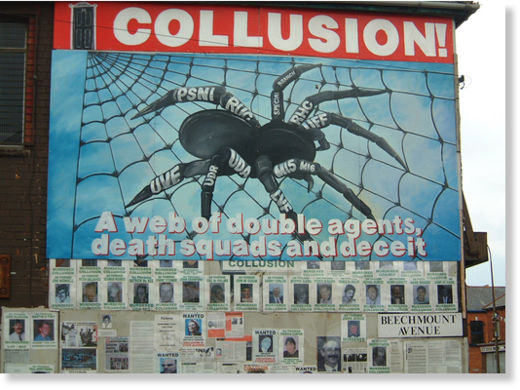
For example, on 5 January 1976 near the village of Kingsmill in South County Armagh, ten Protestant men on their way to work were taken from a minibus and shot dead by a group calling itself the 'South Armagh Republican Action Force'. This group had apparently sprung up from nowhere and was not known to be attached to any official brigade of the IRA. As mysteriously as it had appeared, it then disappeared. The murders were assumed to be in retaliation for the killing of six Catholics the night before when, at about 6pm, three masked men broke into a Catholic house in Whitecross and shot three brothers. Neighbours claimed that there had been two military checkpoints - one at either end of the road - around the time that the attack took place.
At about 6:20pm the same night, three masked men entered another Catholic-owned house in Ballydougan, about twenty miles away. Sixteen family members were in the house at the time. Joseph O'Dowd and his nephews Barry and Declan O'Dowd were shot dead. All three were members of the non-violent moderate Social Democratic and Labour Party. The RUC concluded that the weapon used was a 9mm submachine gun, although a member of the family claimed that a pistol with a silencer was also used.
The British elite's use of 'pseudo-gangs' in Northern Ireland fell into three categories:
1) Special Units of the British Army such as the SAS, the Force Research Unit (FRU), the Military Reconnaissance Force (MRF) and '14 Intelligence Company'. In an article in the Sunday Times in 1977, David Blundy described 12 separate incidents involving such groups, one of which involved troops from these special groups carrying out bombing attacks that would later be attributed to the IRA. These groups were also involved in recruiting local Irish Catholics (often petty criminals) who would be coerced, in one way or another, to work for the British as infiltrators or simple 'patsies'. It goes without saying that such individuals were supremely expendable as far as the British were concerned.
2) The second type of 'Pseudo-gang' used by the British were the Protestant loyalist paramilitary groups, the ideological descendants of the previously-mentioned 'peep-o-day boys'. Such groups included the Ulster Volunteer Force (UVF), Ulster Freedom Fighters (UFF) and the Ulster Defence Association (UDA). Many official investigations in recent years have detailed the reality of widespread collusion between these groups and the protestant police force and British military and intelligence groups. They were seen as natural allies by the British in the fight against the IRA and the Catholic population, and very often as tools to be manipulated in service of the major British goal of continuing the conflict regardless of the negative consequences for either of the local communities. In one case in 1981, the Intelligence Officer of the Derry Brigade of the UDA was exposed as being a British Military Intelligence Officer who supplied the names of local Catholics for a hit-list.
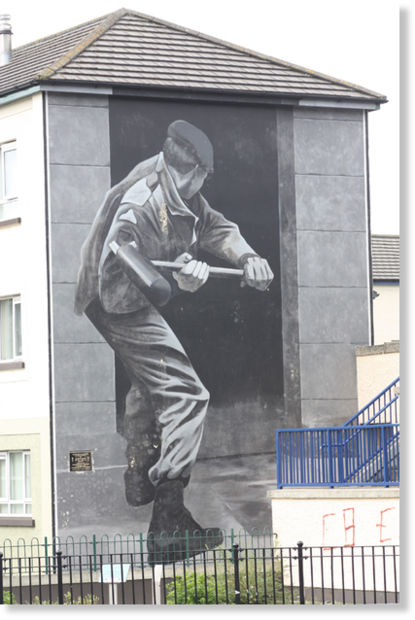
3) The third type of pseudo-gang used by the British elite in Northern Ireland were loyalist Protestant groups made up of local criminals, created and controlled from the very beginning by the British. One notable instance of this tactic was the Irish Freedom Fighters (IFF) who, after carrying out several attacks against Catholics, simply vanished after being accused by the IRA of being a totally British-inspired gang.
Clearly these British tactics benefited neither the Irish Catholics nor the Loyalist Protestants. Indeed, there is evidence that the Loyalist groups quickly became aware of the efforts by the British to foment a 'sectarian war' and then stand back and reap the benefits. On numerous occasions throughout 'the Troubles', Loyalist paramilitary groups warned their community that the SAS were operating under the guise of already existing loyalist groups. In 1974, a group called the Ulster Citizen Army (UCA) sent a communiqué to the press stating that:
"The Ulster Freedom Fighters (UFF) operate under the control of the SAS. Numerous sectarian killings have been perpetrated by the SAS using the name of the UFF. Consequently, the UCA threatens to launch retaliatory actions against British interests if this state of things does not cease."UDA leaders Tommy Herron and Ernie Elliott, who were responsible for forming the abovementioned UCA as a faction within the UDA, had in 1972 taken steps to open up a line of communication with the IRA leadership with a view to ending the conflict. Within a few months, both men were assassinated by a group that bore all the hallmarks of a British pseudo-gang. UVF leader Jim Hanna was known to be in direct contact with two British Military Intelligence officers. When Hanna made contact with Cathal Goulding and other official IRA leaders in 1973, he was assassinated. Within a few weeks the UVF issued a statement that Hanna 'had been murdered by the British army'. The message was clear, with the British attempting to project the conflict as an 'inter-community war', anyone, Loyalist or Republican, who distorted that image was quickly eliminated.
The motivation for the existence of Republican and Loyalist paramilitary groups was rooted in the protection and well-being of their communities. Despite how they (especially the IRA) were cast by the British elite, their numbers were made up of the ordinary, generally working-class, people (as has been the case with most resistance movements) from which they drew their support. There was in fact much to unite the Protestant and Catholic working class in 1970s, 80s and 90s Northern Ireland, if only the political and religious division could be put aside. After all, religious and political beliefs do not put food on the table. While the Catholics were clearly discriminated against, both communities suffered from the negligence of the elite in terms of housing, jobs and infrastructure, and it was clear that there would be no winners in the case of a full-scale sectarian conflict.
On the other hand, the British government and the ruling elite in Northern Ireland had everything to gain from 'civil war' or at least the appearance of it (today we see a stark parallel in the alleged 'civil wars' in places like Iraq and Syria).The last thing the British government wanted to see was a politically and socially aware and unified working class emerge in a major part of its 'United Kingdom'. At the same time, the existing divisions in Northern Ireland were crucial to maintaining the testing ground for British troops against 'urban guerilla warfare'. For their part, the jobs and salaries of the vast majority of the Protestant politicians and ruling colonial elite in Northern Ireland were entirely dependent on the continuation of the conflict. If there were no 'Troubles' most politicians would have to go out and get real jobs.
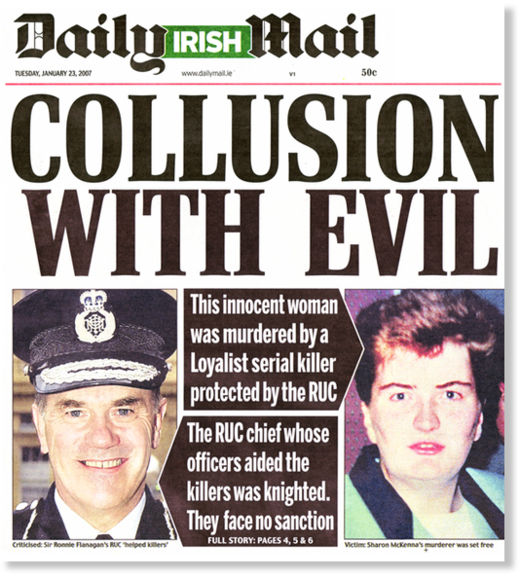
The propaganda war then has always been a major front in the battle between popular resistance groups and the elite. In their war against the Irish rebels during the First World War, the British disseminated a fake oath of allegiance to Sinn Fein, the political group associated with the IRA. The same fake oath was later re-published by the British army in various papers in 1970s Northern Ireland. The 'oath' that was supposedly taken by all Catholics was stated:
"These Protestant robbers and brutes, these unbelievers of our faith, will be driven like the swine they are into the sea, by fire, the knife or by poison cup until we of the Catholic faith and avowed supporters of all Sinn Fein action and principles, clear these heretics from our land [...] At any cost we must work and seek, using any method of deception to gain our ends towards the destruction of all Protestants and the advancement of the priesthood and the Catholic faith until the Pope is complete ruler of the whole world. We must strike at every opportunity, using all our methods of causing ill-feeling within the Protestant ranks and in their business. The employment of any means will be blessed by His Holiness the Pope. So shall we of the Roman Catholic Church and Faith destroy, with smiles of thanksgiving to our Holy Father the Pope, those who shall not join us and accept our beliefs."With just a few changes, the above could today be published as one of the many diatribes that are alleged to issue from the PR department of so-called 'Muslim terrorist organisations' like 'al-Qaeda'.
The incestuous relationship that we see today between the mainstream media and the intelligence community has a long history. In Northern Ireland the media was indispensable to the British in 'catapulting the propaganda' far and wide and, as such, the owners and editors of the major British media outlets can reasonably be stated to have blood on their hands. In an article carried in The Guardian on December 18th 1981 entitled 'How the Secret Service shaped the news', Richard Fletcher stated:
"For over 30 years the British Secret Intelligence Service (SIS - forerunner of MI6) ran a world-wide network of news agencies which, at their peak, had some 250 employees and for 15 years acted as sole agents for Reuters in the Middle East."In his book Internment!, Belfast journalist John McGuffin gives an example of British army propaganda spread by the media:
"It became definite policy for most [British] newspapers that 'our army' could do no wrong. On August 19th 1971, the Daily Mail, for example, carried the headline: 'Army Shoots Deaf-mute Carrying Gun'. The inquest into the murder of Eamonn McDivitt by British troops showed that at no time had he a gun and that the soldiers, who gave evidence anonymously, contradicted one another. The Mail however made no apology or retraction. Everyone shot dead by the soldiers must, by necessity, have been a gunman or a mad bomber. And if that fails to convince, he or she must have been shot by the IRA or in a 'cross-fire'. John Chartres of the London Times even invented a new category: thus Danny O'Hagan of the New Lodge Road, shot by the army on 31 July 1970, was an 'assistant petrol bomber'. As Eamonn McCann of the Dublin-based Sunday World pointedly asked, 'What do "assistant petrol bombers" do? Hold coats?'"Torture was, of course, a staple part of British rule in Northern Ireland. Thousands of Catholics were brutalised on suspicion of being members of the IRA under a policy of torture that was sanctioned at the highest levels within the British establishment. Torture also played a role in 'turning' captured IRA members into agents of British intelligence. In a 2004 article for the UK Guardian, Sinn Féin President Gerry Adams explained some of the techniques used by the British:
There was also the bizarre story written by Joe Gorrod and Denzil Sullivan and published on the front page of the UK Daily Mirror: 'Red Assassin shot dead in Ulster'. Readers were informed that "soldiers in a patrol which stalked and killed a terrorist sniper identified him as a Czechoslovakian. He carried a Russian-made AK-47 rifle, one of the most deadly every produced and the one most favored by assassins." The British army finally admitted that it was a fantasy they had concocted and passed to the media. On 23 August 1972, the second item on the ITN evening TV News was a story about three little girls aged eight who had been used by the 'unscrupulous IRA' to push a pram containing a huge bomb towards a military post at the back of the Royal Victoria hospital in Belfast. The "chivalrous soldiers were shocked and refused to fire, even at the risk of their own lives", British viewers were told. It was later admitted by the British Army Press Office that the entire story was false. ITN News however, failed to inform the British public of this fact.
"Some were stripped naked, they were beaten with batons and fists on the testicles and kidneys and kicked between the legs. Radiators and electric fires were placed under them as they were stretched over benches. Arms were twisted, fingers were twisted, ribs were pummelled, objects were shoved up the anus, they were burned with matches and treated to games of Russian roulette. Some of them were taken up in helicopters and flung out, thinking that they were high in the sky when they were only five or six feet off the ground. All the time they were hooded, handcuffed and subjected to a high-pitched unrelenting noise. During this process some of them were photographed in the nude.False Flags
For some time we were photographed in the company of young, noisy, exuberant squaddies. I'm sure we were not a pretty sight. I'm also sure that they were grinning as much as the soldiers in the photographs we have all seen recently [from Iraq]. Our photos were never published, but somewhere, in some regimental museum or in the top of somebody's wardrobe or in the bottom of a drawer, there are photographs of me and my friends and our captors."
During the 'long war' the IRA was accused of indiscriminate bombings in England that killed many civilians. In November 1974, bombs exploded in two Birmingham pubs; 21 people were killed and 160 injured. The blasts were blamed on the IRA although they denied responsibility and claimed that their policy was never to attack non-military targets without sufficient warning to avoid civilian casualties. In terms of the propaganda war, it seems obvious that it would be entirely counter-productive for any resistance movement to cause large civilian casualties and thereby diminish public support for their cause. On the other hand, Kitson's counter-insurgency strategy calls precisely for the 'discrediting of the resistance movement in the eyes of the public by any means.' In the case of the Birmingham pub bombings, the evidence points clearly to a British covert operation for two main reasons:
1) many of the 21 killed were Irish people living in England.
2) A few days later Kenneth Littlejohn, who had been exposed two years earlier as playing a part in bombings carried out by British agents in Dublin, was arrested by British police.
Reaction in Britain to the bombings was so fierce, with anger and hysteria sweeping the country, that British police framed six Irish Catholics, who had been living in the area since the 1960s, for the bombings. Known as 'The Birmingham Six', the men would spend 16 years in prison before being released and found not guilty. In the aftermath of the bombings, the first in a series of new anti-terrorist legislation called 'The Prevention of Terrorism Act' (PTA) was quickly passed through the British parliament and the IRA was officially banned. The PTA gave British police sweeping powers to clamp down on political dissent in general and to detain, photograph and fingerprint suspects without a warrant. The fact that the provisions of the PTA would be built upon by the British elite to formulate and pass the broader 'Terrorism Act' of 2000 and the draconian 'Prevention of Terrorism Act' of 2005, which directly target British citizens, is strong evidence for Roger Faligot's claim that the British war against the IRA and the Catholics of Northern Ireland was used as a testing ground for later population control and suppression of dissent in Britain and Europe.
In December 1971, a month before Bloody Sunday, an explosion ripped apart McGurk's Bar, a Catholic pub in Belfast, killing 15 people and wounding 17 more. The Army and police claimed to have found evidence that the bomb that caused the blast had gone off inside the bar. Given that McGurk's was a Catholic bar, this implied that it must have been an IRA device that went off 'accidentally'. Forensic evidence later proved that the bomb had clearly been placed outside the pub and that the loyalist pseudo-gang, the protestant paramilitary force UVF, which was controlled by British intelligence, was responsible.
On the 8th November 1987, a bomb exploded in the town of Enniskillen, Northern Ireland, during a ceremony commemorating those who died in the First World War. Eleven people, mostly civilians, were killed. The bombing was blamed on the IRA although they denied any involvement. The rather predictable result was national and international condemnation of the group. When we consider the result of the attack - a serious blow to the moral and public standing of the IRA - the finger of guilt must be pointed squarely at Kitson and his ilk and their theories of how to win the propaganda war against an armed resistance group.
Prisoners of Conscience and Hunger Strikes
During a meeting with the British government in 1972 to discuss a possible truce, members of the IRA delegation negotiated what effectively amounted to 'prisoner of war' status or 'Special Category Status' (SCS) for IRA prisoners in jails in Northern Ireland. This meant prisoners did not have to wear prison uniforms or do prison work, were housed within their paramilitary factions, and were allowed visits and food parcels. In 1976 however, the new Labour Secretary of State, Merlyn Rees, announced the phasing out of SCS. Anyone convicted of a 'terrorist-related offence' after March 1976 would be treated as an ordinary criminal and would have to wear a prison uniform, do prison work and serve their sentence in the new Maze Prison, in what became known as the 'H-Blocks'.
By late 1976, the new cellular prison accommodation was ready to receive its first prisoners. The first prisoner sentenced under the new policy was IRA volunteer Kieran Nugent. When he arrived at the Maze Prison and was ordered to wear a prison uniform he refused saying he was not a criminal but a political prisoner. He was locked in his cell where he wrapped himself in the blanket that was on the bed rather than remain naked. By 1978 nearly 300 Republican prisoners were refusing to wear prison uniforms in what became known as the 'blanket protest'. Prisoners began a campaign of non-obedience to prison guards and were beaten in response. They had five demands which were based on their belief that they were political prisoners:
The right not to wear a prison uniform; The right not to do prison work; The right of free association with other prisoners The right to one visit, one letter and one parcel per week; Full restoration of remission lost through the protest.On 27 October 1980, several of the prisoners began a hunger strike. Two months later, in a war of nerves between the IRA leadership and the British government, and with one of the prisoners, Sean McKenna, lapsing in and out of a coma and on the brink of death, the government appeared to concede the essence of the prisoners' five demands with a thirty-page document detailing a proposed settlement. With the document in transit to Belfast, the decision was taken to save McKenna's life and end the strike after 53 days on 18 December.
In January 1981 however, it became clear that the agreement would not be honored by the British. On February 4th, the prisoners issued a statement saying that the British government had failed to resolve the crisis and declared their intention of "hunger striking once more". The second hunger strike began on 1 March, when Bobby Sands, the IRA's former Officer Commanding (OC) in the prison, began to refuse food. Unlike the first strike, the prisoners joined one at a time and at staggered intervals, which they believed would arouse maximum public support and exert maximum pressure on then British Prime Minister, Margaret Thatcher.
Five days into the hunger strike, Frank Maguire, a Republican Member of the British Parliament for Fermanagh and South Tyrone died, resulting in a by-election. Hunger striker Bobby Sands stood as an Anti H-Block candidate against Ulster Unionist Party candidate Harry West. Following a high-profile campaign, the election took place on 9th April, and Sands was elected to the British House of Commons with 30,492 votes to West's 29,046.
Sands' election victory raised hopes that a settlement could be negotiated, but Prime Minister Margaret Thatcher refused to give concessions to the hunger strikers stating that, "we are not prepared to consider special category status for certain groups of people serving sentences for crime. Crime is crime is crime, it is not political".
The world's media descended on Belfast, and several intermediaries visited Sands in an attempt to negotiate an end to the hunger strike, including Síle de Valera, granddaughter of the first President of liberated Ireland, Pope John Paul II's personal envoy John Magee, and European Commission of Human Rights officials. With Sands close to death, the government's position remained unchanged, with Secretary of State for Northern Ireland Humphrey Atkins stating: "If Mr. Sands persisted in his wish to commit suicide, that was his choice. The Government would not force medical treatment upon him" On 5 May, Sands died in the prison hospital on the sixty-sixth day of his hunger strike as an elected member of the British House of Commons.
In the two weeks following Sands' death, three more hunger strikers died. Francis Hughes died on 12 May, resulting in further rioting in nationalist areas of Northern Ireland, in particular Derry and Belfast. Following the deaths of Raymond McCreesh and Patsy O'Hara on 21st May, The Catholic Church's Primate of All Ireland, Tomás Ó Fiaich, criticised the British government's handling of the hunger strike. Despite this, Margaret Thatcher refused to negotiate a settlement, stating: "Faced with the failure of their discredited cause, the men of violence have chosen in recent months to play what may well be their last card".
On 31st July the hunger strike began to break, when the mother of Paddy Quinn insisted on medical intervention to save his life. The following day Kevin Lynch died, followed by Kieran Doherty on 2nd August, Thomas McElwee on 8th August and Michael Devine on 20th August. On 6th September the family of Laurence McKeown became the fourth family to intervene and asked for medical treatment to save his life, and theologian Cathal Daly issued a statement calling on republican prisoners to end the hunger strike. A week later James Prior replaced Humphrey Atkins as Secretary of State for Northern Ireland and met with prisoners in an attempt to end the strike. Liam McCloskey ended his strike on 26th September after his family said they would ask for medical intervention if he became unconscious, and it became clear that the families of the remaining hunger strikers would also intervene to save their lives. The strike was called off on 3rd October.
The remaining prisoners published a statement in which they explained their position:
"There were several reasons given by our comrades for going on hunger-strike. One was because we had no choice, no other means of securing a principled solution to the four-year protest. Another, and of fundamental importance, was to advance the Irish people's right to liberty. We believe that the age-old struggle for Irish self-determination and freedom has been immeasurably advanced by this hunger-strike and therefore we claim a massive political victory. The hunger-strikers, by their selflessness, have politicised a very substantial section of the Irish nation and exposed the shallow, unprincipled nature of the Irish partitionist bloc. Lastly, we reaffirm our commitment to the achievement of the five demands, by whatever means we believe necessary and expedient. We rule nothing out. Under no circumstances are we going to devalue the memory of our dead comrades by submitting ourselves to a dehumanising and degrading regime."As Roger Faligot asked in his book, The Kitson Experiment: "Are these the words of nihilistic criminals?"
As the long war dragged on into the 1990s, the effects of Kitson's counter-insurgency strategy began to take their toll on the IRA. With the British government's 'pseudo-gangs', infiltrators and informers, it had become increasingly difficult for the IRA to keep track of the activities of its volunteers or indeed, who precisely its volunteers were. This is the fate that befalls any resistance organisation that engages in a protracted, multi-decade resistance movement against a major government. There is simply no way to prevent state forces from ultimately infiltrating the movement, sowing suspicion and discord, and disrupting operations.
In 2002, the Scottish newspaper The Sunday Herald published a series of articles containing the accounts of former and active British military and intelligence personnel who claimed that they had been working within the IRA for years as double agents. Almost all of the claims centered around the allegation that the British government had knowingly allowed them to carry out bombing and shooting attacks on British military personnel and infrastructure in Northern Ireland. One of the more interesting allegations was that one of these agents had, on behalf of British intelligence, introduced the idea of the 'proxy suicide bomb' to the IRA, whereby a member of the public would be forced to drive a vehicle carrying a bomb to a target. This technique was used on only two occasions in Northern Ireland by individuals claiming to represent the IRA before it was banned by the IRA army council. If true, then we must conclude that, in the 1980s, 10 years before the first 'Palestinian suicide bombing', British military intelligence pioneered the tactic of the 'suicide bomb' in Northern Ireland. More than that, there is overwhelming evidence, only a part of which has been presented here, for the claim that, from an historical perspective, 'terrorism' is not a weapon wielded by some wild-eyed religious or political fanatic, but rather a carefully developed strategy, employed by the elite and implemented by state actors to ensure that the will of the ordinary, decent people of this planet is never truly exercised.
Sources:
The Blood Never Dried: A People's History of the British Empire, John Newsinger, Bookmarks 2000
The Kitson Experiment: Britain's Military Strategy in Ireland, Roger Faligot, Brandon 1983
Internment!, John McGuffin
The Nemesis File, Paul Bruce, John Blake Publishing 1996
British Counter-Insurgency, John Newsinger, Palgrave 2002
Eyewitness to Irish History Peter Berresford Ellis, John Wiley & Sons 2004
Churchill's Secret War: The British Empire and the Forgotten Indian Famine of World War II, Madhusree Mukerjee, Basic Book 2010
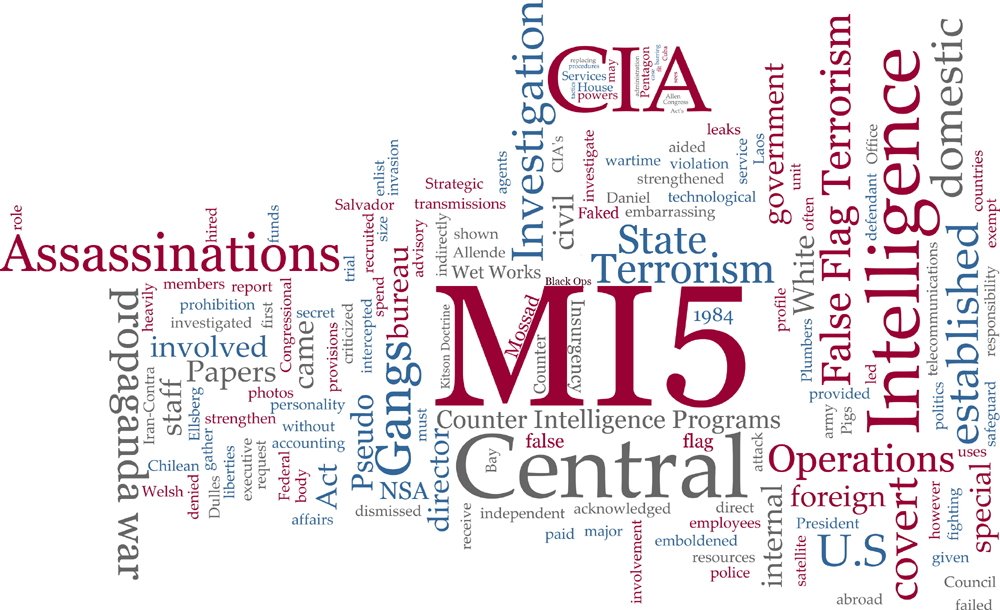
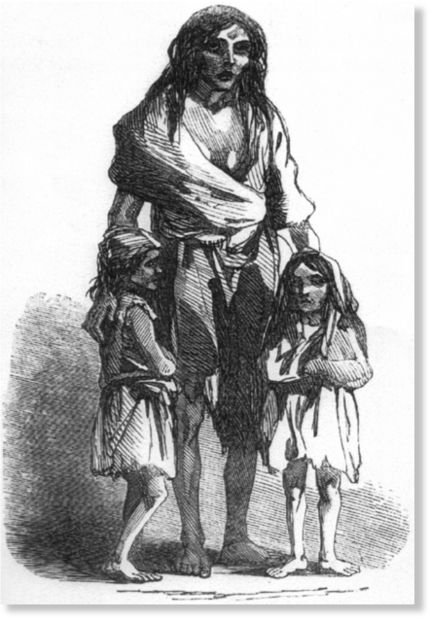
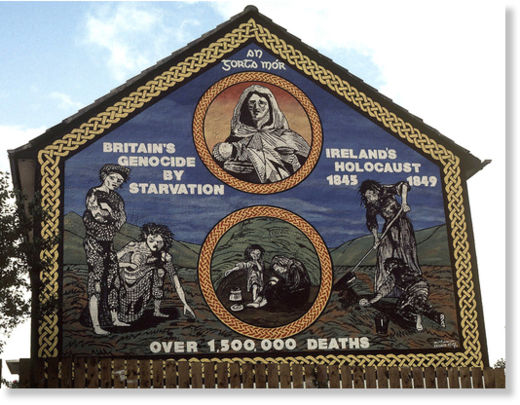
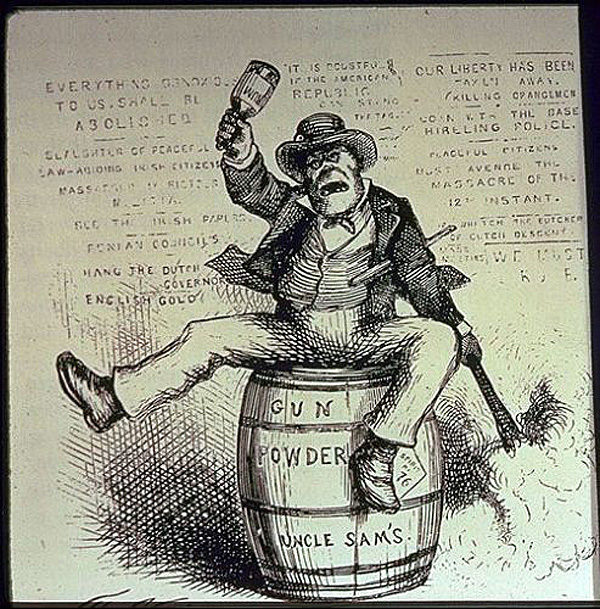
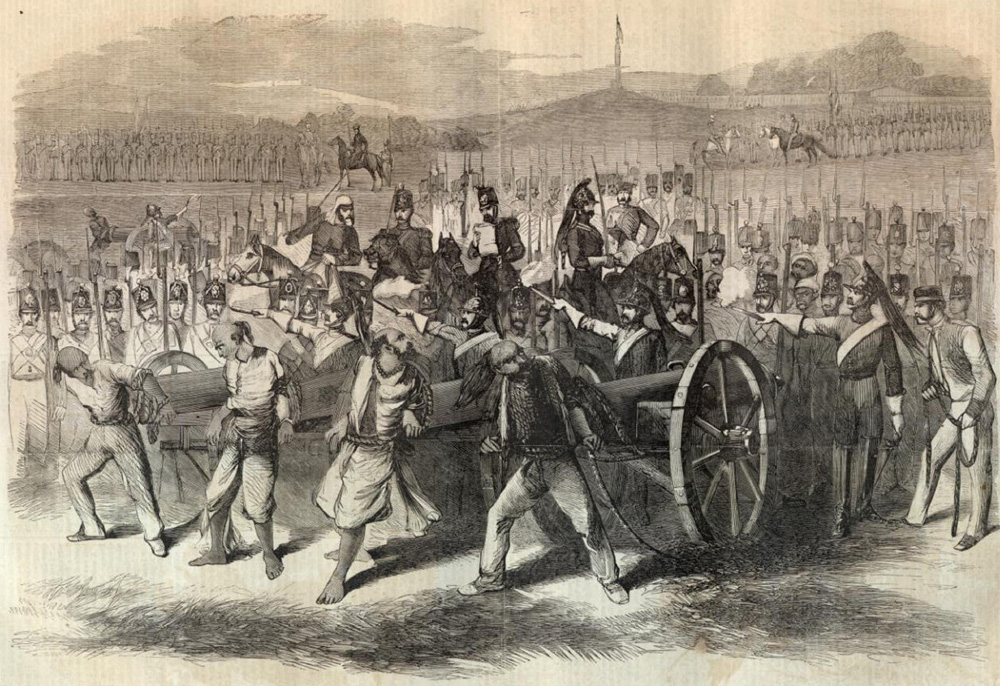
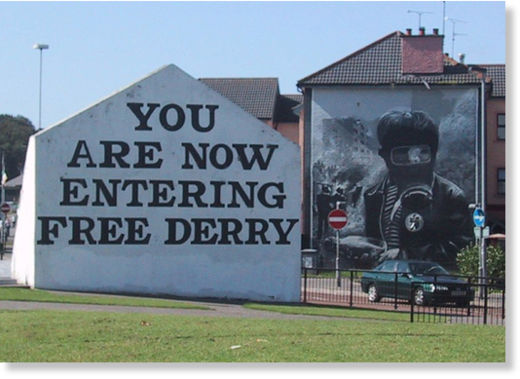
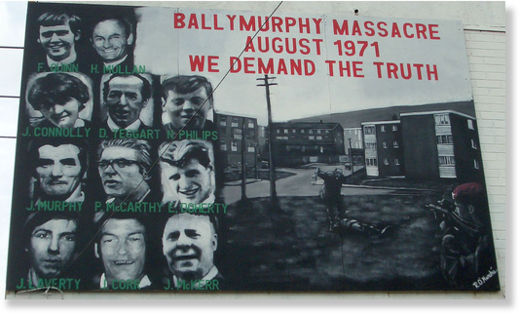
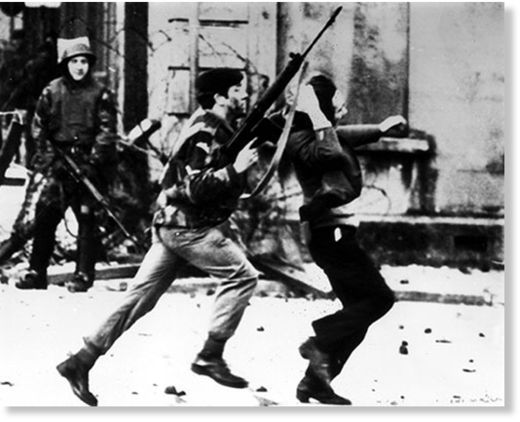
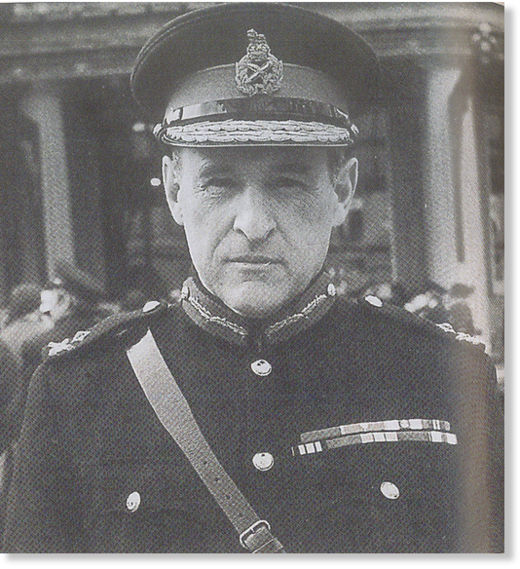
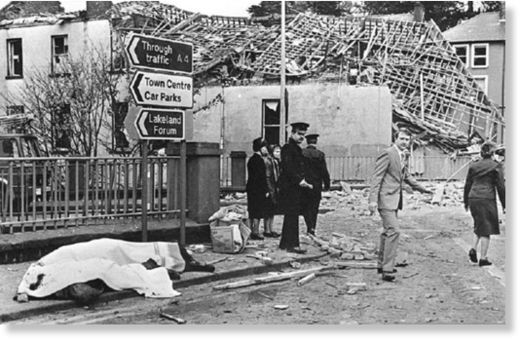
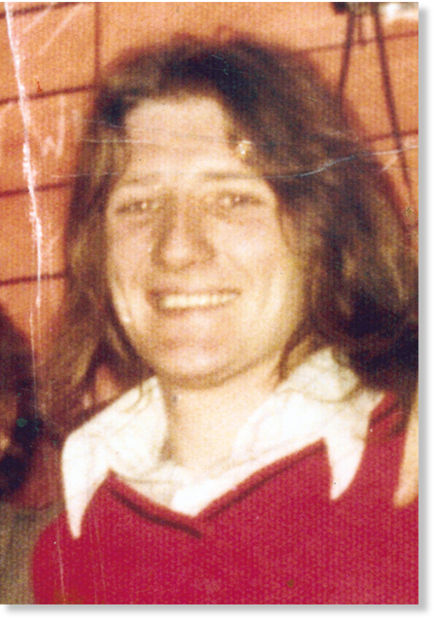



"I" already knew terrorism was a weapon of the pathocrats, but i didn't know the context, you provided that. Thank you and keep rocking on.